John Smith
TFC Member – UK
Have you ever wondered what it would be like to take your pencils and put your own manga-style stories on paper?
How many times have you imagined creating amazing characters, full of life and charisma, each stroke a tribute to your favorite anime heroes? Now is your chance!
(4.7 out of 5 based on 1,835 reviews)

Have you ever wondered what it would be like to take your pencils and put your own manga-style stories on paper? How many times have you imagined yourself creating amazing characters, full of life and charisma, each stroke a tribute to your favorite anime heroes? Now is your chance!
Hernan Castellanos, a renowned Manga artist, guides you step by step in this revolutionary professional Manga drawing course. In 12 volumes enriched with 12 practice workbooks, you will learn from the basics to the most sophisticated techniques that will allow you to take your passion and creativity to the next level.
For only $197, you can turn your dreams into reality. Start mastering the art of Manga drawing today – don’t let the opportunity slip through your fingers!

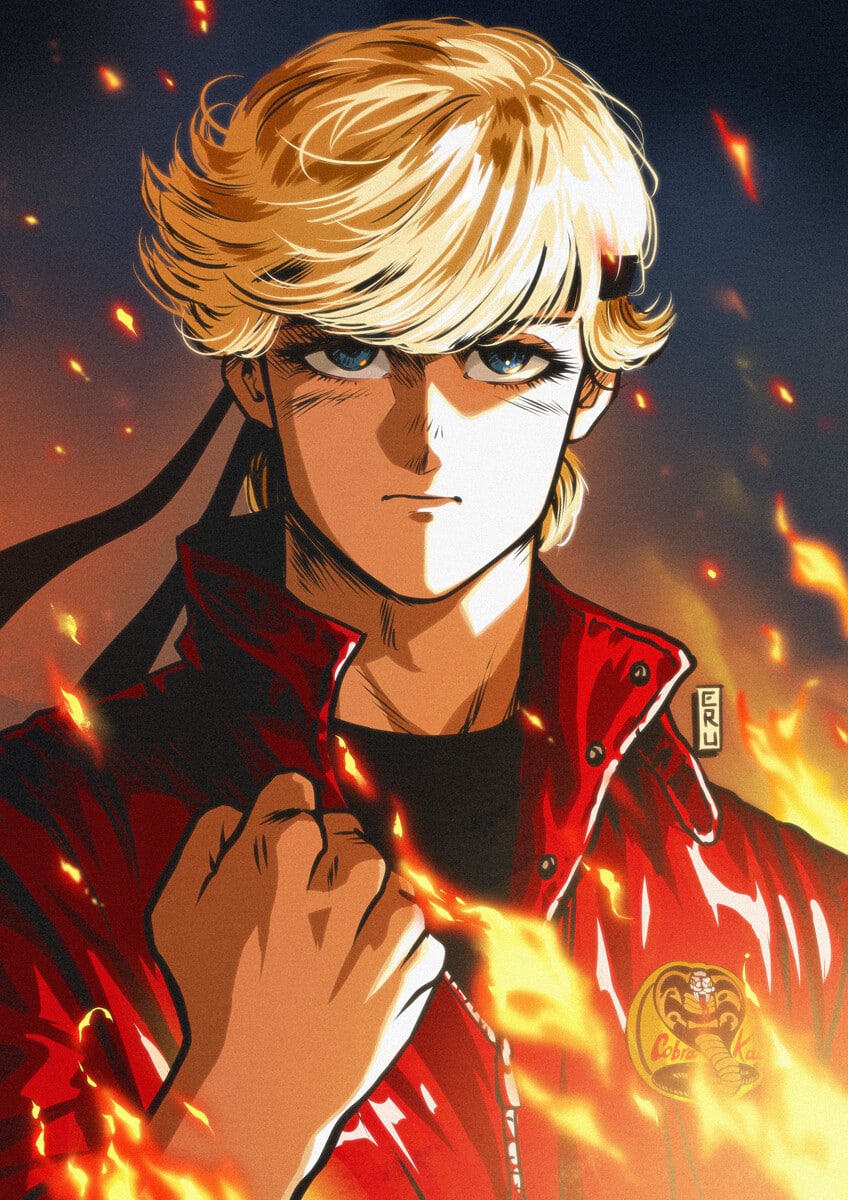
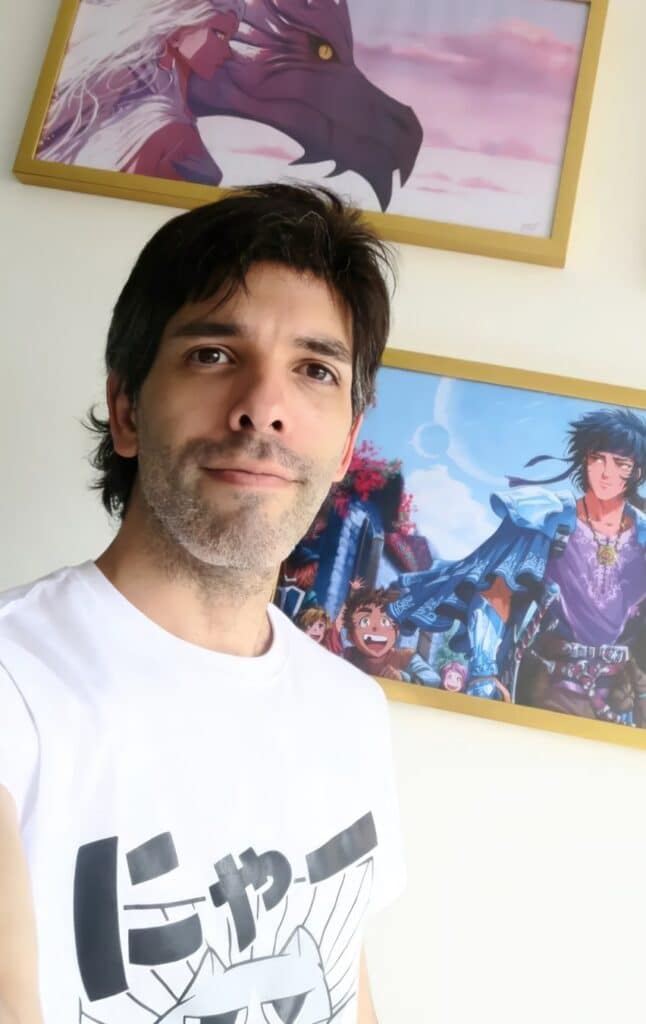
This course is designed and presented by TFC and Hernan Castellano, an acclaimed artist in his field.
With over 20 years of experience, Hernan has perfected his ability to teach and communicate complex techniques in a clear and simple manner.
This course is not only an opportunity to learn how to draw, but an invitation to immerse yourself in the world of art with him, who will guide you step by step with his experience and love for drawing.
Come on, start your artistic journey with us!
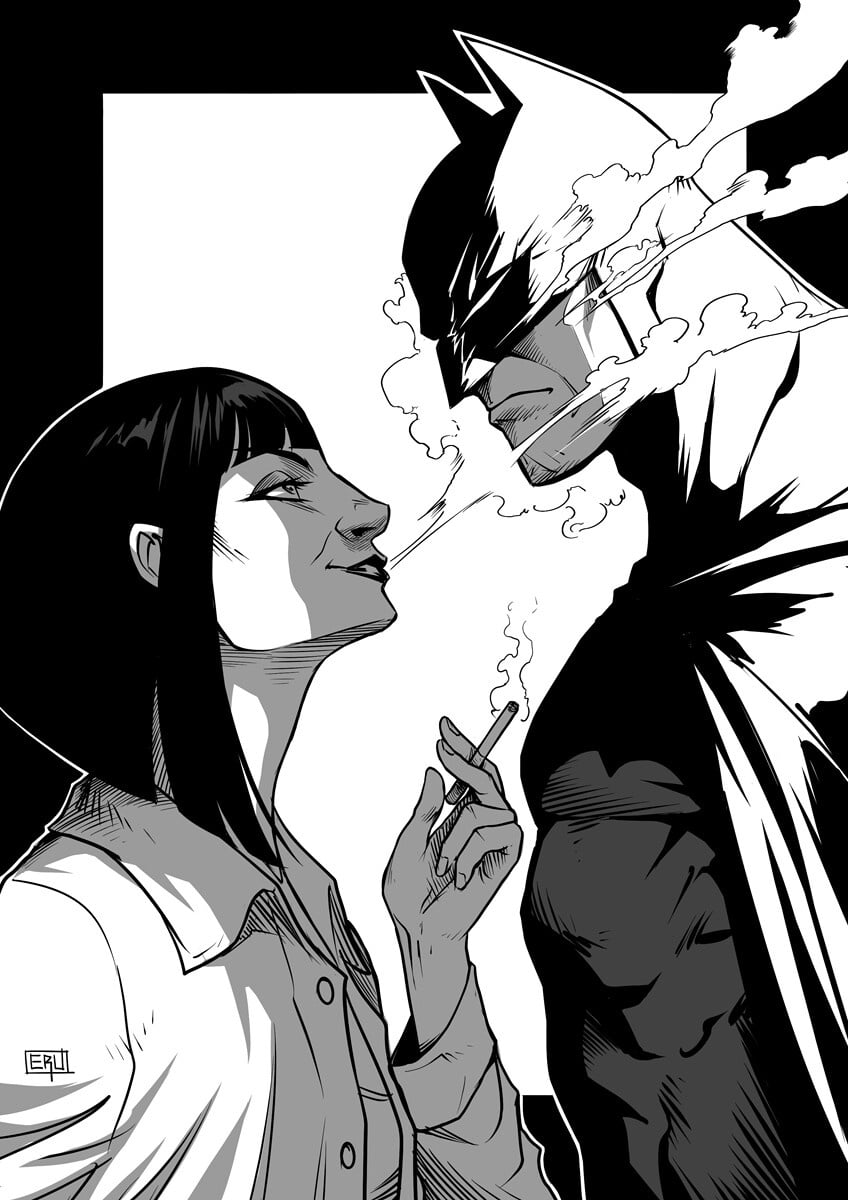
Throughout this exciting journey, Hernan will share with you his personal secrets and techniques, giving you a deep understanding of the art of Manga and a solid foundation for developing your own style and artistic voice.
Are you ready to unleash the power of your artistic skills and bring your own creations to life in the fascinating universe of Manga?
It’s time to create your own story on every page!
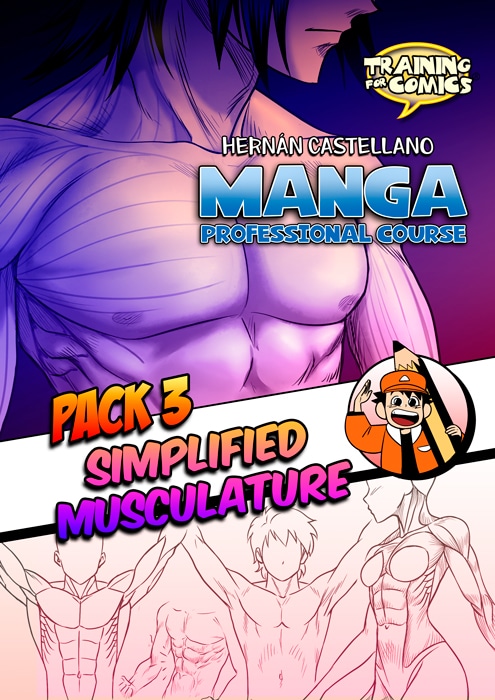
With each lesson, you will acquire valuable skills that will allow you to express yourself in a new and exciting way through your own Manga creations.
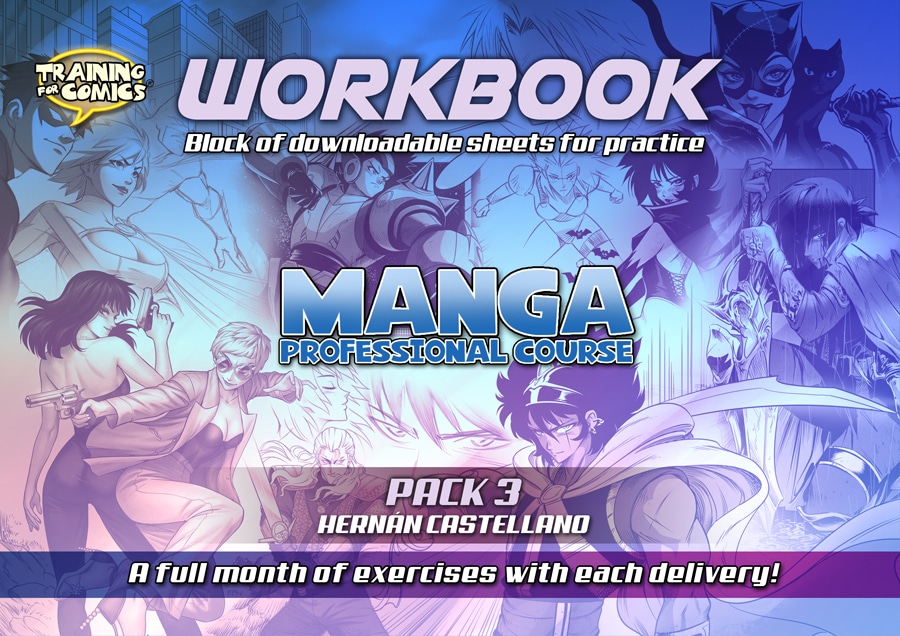
Accompanying each lesson, you will find a training workbook that amplifies your understanding of the art of Manga.
From the first lesson to the last, these workbooks will guide you through each technique and concept, providing an invaluable resource for practicing and perfecting your Manga skills.
Becoming a Manga artist has never been so accessible and enriching.

I definitely recommend Training For Comics, especially for its exceptional training method for illustrators of all kinds.

I definitely recommend Training For Comics, especially for its exceptional training method for illustrators of all kinds.
Master Manga once and for all!

Pack 1 (Nivel {mb_content_nivel})
Content:
This lesson marks the beginning of your manga adventure, introducing you to the style, history and cultural relevance of manga, before taking you through the fundamental principles of character drawing.
You’ll learn crucial drawing techniques such as character construction, proportion based on head size, and depicting figures from multiple perspectives. In addition, you’ll discover how manga breaks conventional rules of proportion, and explore drawing styles ranging from realism to manga.
To top it off, you’ll unlock the secrets of capturing movement and balance in drawing, and learn the importance of constant practice to improve your skills.
In this pack you will learn:
WORKBOOK:
(This pack includes a complete workbook of downloadable exercises to practice and learn these topics).
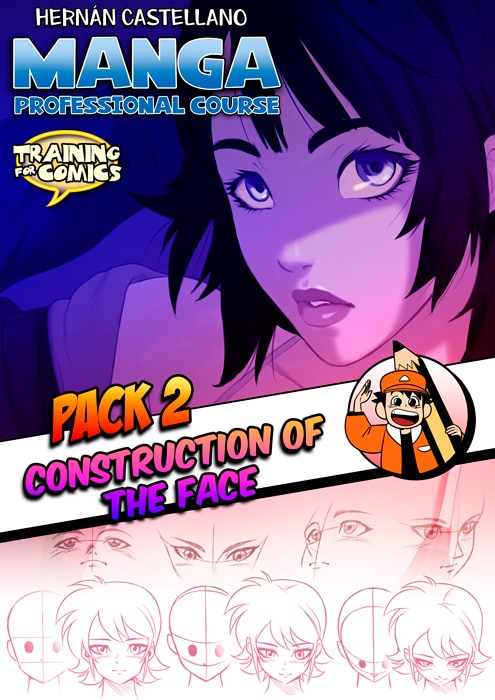
Pack 2 (Nivel {mb_content_nivel})
Content:
Your journey through the world of manga continues with Lesson 2, which dives deep into the art of drawing manga faces.
You’ll begin by learning about the diversity of head and face shapes before moving on to the construction of a face from different points of view. You’ll learn the importance of neck placement, the proportion of the eyes and nose, and the subtle details that make a face come alive.
In addition, you’ll also experiment with renderings in different positions and learn how to apply perspective to your illustrations. With guest artist interviews and weekly drawing challenges, this lesson will keep you engaged and constantly learning.
In this pack you will learn:
WORKBOOK:
(This pack includes a complete workbook of downloadable exercises to practice and learn these topics).

Pack 3 (Nivel {mb_content_nivel})
Content:
Lesson 3 introduces the world of muscle anatomy, a crucial part of taking your manga drawings to the next level. You’ll learn how to draw muscles that give shape and movement to the human body, from the torso to the limbs, and you’ll understand how musculature varies between male and female figures.
You will also discover the crucial role of bones in depicting muscles and learn how to simplify the complexity of muscles for a more fluid drawing. In addition, you will learn how to overcome challenges and frustrations when drawing complex areas of the body.
You will realize how anatomy defines the shape of the body, learn to draw human silhouettes and understand body shapes.
In this pack you will learn:
WORKBOOK:
(This pack includes a complete workbook of downloadable exercises to practice and learn these topics).
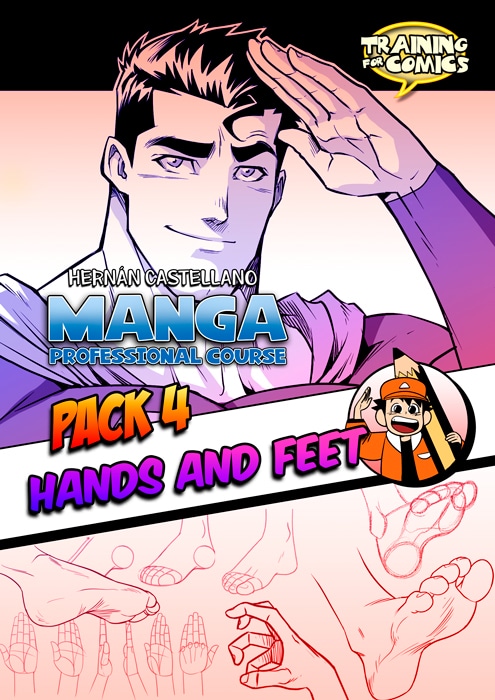
Pack 4 (Nivel {mb_content_nivel})
Content:
Discover the art of limbs in manga illustration with our fourth lesson! Often intimidating and always essential, hands and feet become our protagonists. From basic structures to precise proportions, you’ll learn how to bring these fundamental parts of the human body to life in your own creations.
Explore the complexity and diversity of the fingers, master the drawing of the fist and understand how perspective can transform a flat image into a realistic representation.
But we don’t stop there: you’ll also delve into the world of poses, actions and how to give depth and dimension to your drawings, all before entering the exciting territory of feet!
Intrigued, come and discover all the secrets in this detailed lesson!
In this pack you’ll learn:
WORKBOOK:
(This pack includes a complete workbook of downloadable exercises to practice and learn these topics).
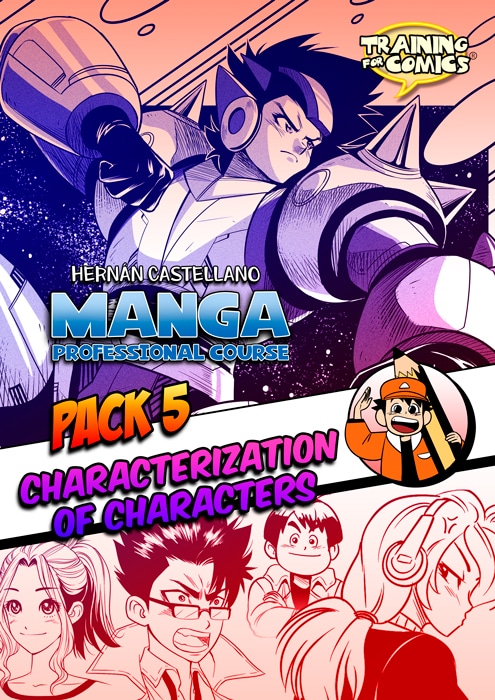
Pack 5 (Nivel {mb_content_nivel})
Content:
The fifth lesson takes you on an exciting journey into the heart of manga character creation. From constructing technical cards to developing believable and varied personalities, this lesson immerses you in the psychology, physics, and stylistics of your characters.
Want to know how poses can reveal your character’s personality or how clothing and hairstyle can reflect their inner world? Would you like to explore how age, height and environment can radically change the perception of your character? Are you intrigued by the idea of bringing your characters to life and making them unique and memorable?
Then look no further! Lesson 5 has everything you need to start creating your own vivid and believable manga characters!
In this pack you’re going to learn:
WORKBOOK:
(This pack includes a complete workbook of downloadable exercises to practice and learn these topics).
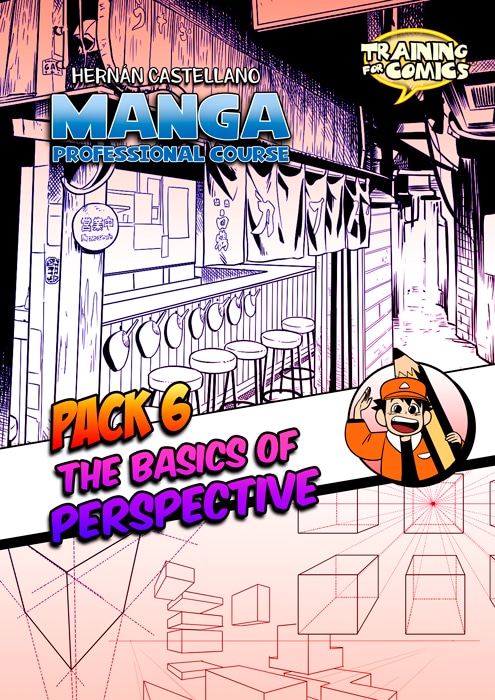
Pack 6 (Nivel {mb_content_nivel})
Content:
In our sixth lesson, let’s dive into the essence of artistic representation: perspective! This lesson introduces you to the fundamental principles of perspective, from the horizon line to vanishing points, and how these concepts apply to manga art. Learn how to transform simple squares into three-dimensional cubes and how depth and volume can bring realism to your creations.
We’ll teach you the subtleties of foreshortening and how to “fake” depth to create stunning optical effects. Interested in how to avoid false perspective and how to manage proportions for a realistic effect? Want to understand how perspective can suggest grandeur and verticality?
This lesson is for you! Come and discover all these secrets and more in Lesson 6.
In this pack you will learn:
WORKBOOK:
(This pack includes a complete workbook of downloadable exercises to practice and learn these topics).
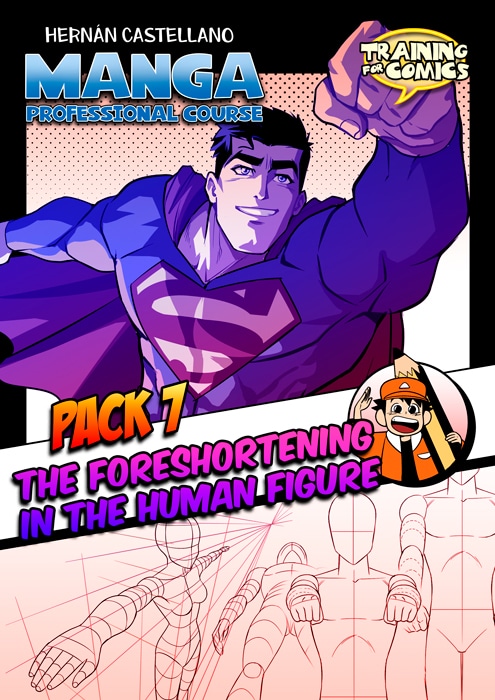
Pack 7 (Nivel {mb_content_nivel})
Content:
Delve into the art of perspective and discover how this optical illusion game can elevate your manga drawing skills to a new level.
In this lesson, we introduce you to the fascinating world of foreshortening the human figure, a technique that will allow you to create more realistic, three-dimensional drawings. You will learn how to master volumetrics, understand how objects change depending on their proximity to the vanishing point and how to freehand draw details of the foreshortened human figure.
We challenge you to change the camera, alter perspective, and play with shadows and highlights to achieve a deeper, more detailed rendering.
We will guide you through each step as you discover how perspective and foreshortening are vital to creating epic, dynamic scenes that convey emotion and tell stories through your drawings.
In this pack you will learn:
WORKBOOK:
(This pack includes a complete workbook of downloadable exercises to practice and learn these topics).
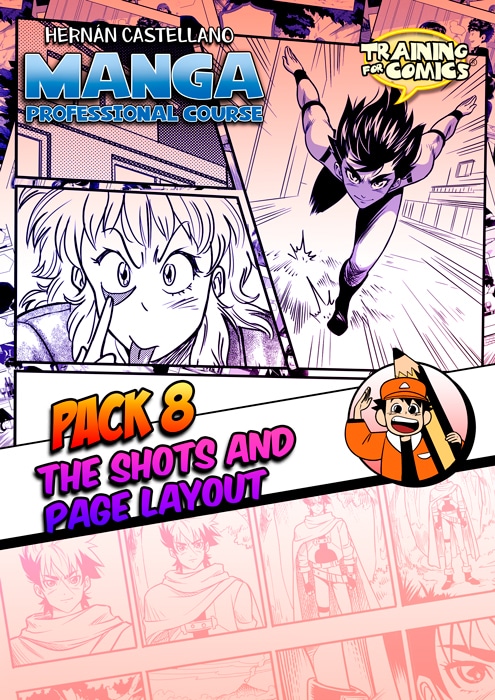
Pack 8 (Nivel {mb_content_nivel})
Content:
Discover the mysterious art of storytelling without words in the world of manga. You will learn the visual storytelling techniques that allow you to do without words, and how shots can be an integral part of your storytelling.
You will study each of the basic shots and how to use them in your illustrations, from showing emotions and expressions of the characters to revealing their environment and the place where the scene will take place. You will delve into the relationship between characters and their environment through shots and counter shots, the importance of consistency and professionalism in page layout, and how to combine vignettes to create an attractive and dynamic format.
This lesson will equip you with the skills necessary to tell a story in a fluid and natural way in the Eastern reading sense, using the different types of shots.
In this pack you will learn:
WORKBOOK:
(This pack includes a complete workbook of downloadable exercises to practice and learn these topics).
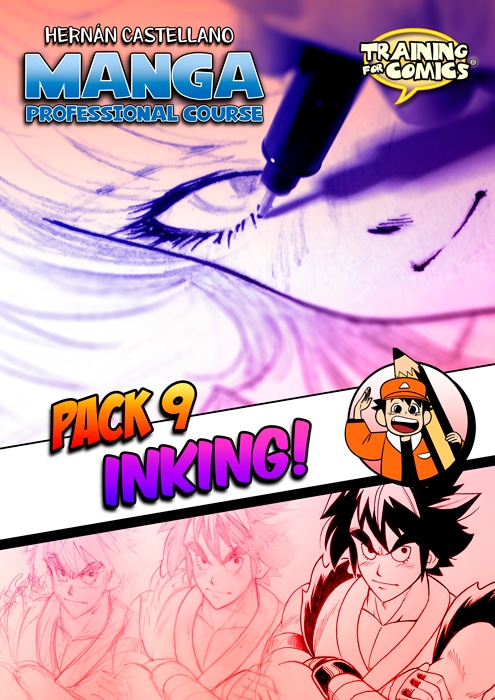
Pack 9 (Nivel {mb_content_nivel})
Content:
Welcome to the world of manga inking, where you define outlines, add depth and bring life to your illustrations. From the definition and relevance of inking, to modern techniques and tools, to the secrets behind a good stroke, this lesson will take you through the fascinating process of inking.
You will explore the advantages and disadvantages of traditional and digital tools, learn how to select the right brush and take care of your inking tools. Throughout the lesson, we will teach you how to use contrast, hand screening and textures, how to generate movement in your illustrations, and finally, how to practice constantly to perfect your technique.
By the end of this lesson, you will have acquired the knowledge and skills to go from sketch to final art, ready to tell your own story in manga.
In this pack you will learn:
WORKBOOK:
(This pack includes a complete workbook of downloadable exercises to practice and learn these topics).

Pack 10 (Nivel {mb_content_nivel})
Content:
Have you ever wondered why you find certain manga illustrations so vivid and absorbing? The secret lies in the mastery of contrast.
In Lesson 10 of our course, we’ll take you on a detailed journey through the world of contrast and how this powerful element can bring your manga illustrations to life. Discover how the use of line modulation techniques, ink and dot plots can create depth and atmosphere in your drawings. Dive into the complexity of tonal keys and learn how to work with monochromatic scales.
In addition, you will learn how to create gradients with hand raster, how to overlay layers of lines to darken your gradients and much more. If you want your characters and scenes to stand out, this lesson is a must.
In this pack you will learn:
WORKBOOK:
(This pack includes a complete workbook of downloadable exercises to practice and learn these topics).
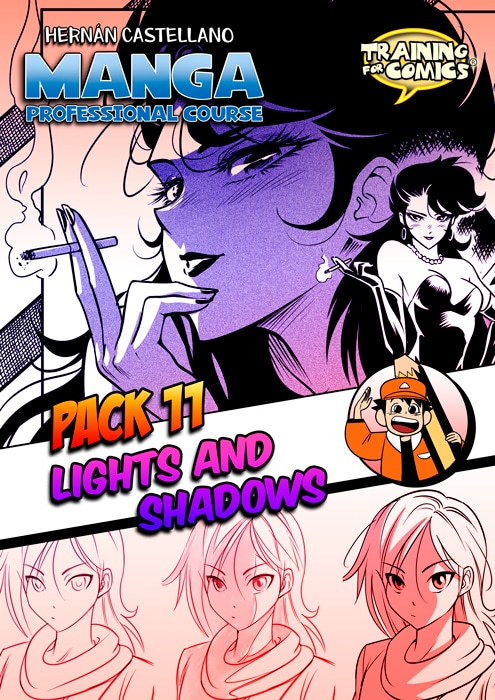
Pack 11 (Nivel {mb_content_nivel})
Content:
Lesson 11 invites you on a fascinating journey of exploration through light and shadow in the world of manga. Learn how lighting can bring your artwork to life, conveying everything from the subtlest emotion to the most intense atmosphere.
You’ll learn about the function of reflected light, how cast shadows and object shadows differ, and how different types of light can completely change the mood of your scene. Explore how light interacts with different surfaces and materials and how to represent those details effectively in your drawings. Plus, you’ll have the opportunity to learn from Oscar Appie, an expert in creating compelling characters.
If you want to master the use of light and shadow in your manga artwork, you won’t want to miss this lesson.
In this pack you’re going to learn:
WORKBOOK:
(This pack includes a complete workbook of downloadable exercises to practice and learn these topics).
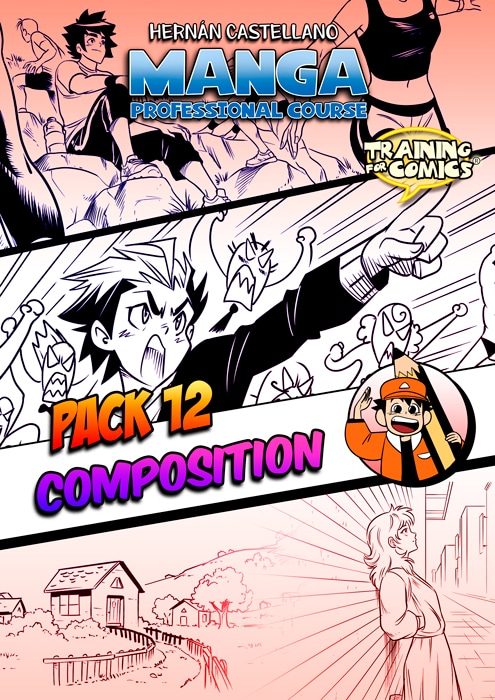
Pack 12 (Nivel {mb_content_nivel})
Content:
In our final lesson, Lesson 12, we will focus on the essential art of manga vignette composition. You will understand how the correct placement and organization of characters and objects within the space of your vignette can influence and guide the reader’s attention.
You will learn the meaning and use of different lines and shapes, and how they can convey different sensations. You will delve into the fascinating world of the rule of thirds and the law of the horizon, learning how to apply them in your vignettes to create interesting and attractive scenes.
But that’s not all, you’ll also have the opportunity to learn from renowned artists in the manga industry and prepare to create your own professional manga pages.
Don’t wait any longer to transform your manga drawing skills and take your art to the next level!
In this pack you will learn:
WORKBOOK:
(This pack includes a complete workbook of downloadable exercises to practice and learn these topics).
New lessons are added every month!

Join us too!
Get all your doubts out of your mind!
Training For Comics is an online platform dedicated exclusively to learning how to draw.
Training For Comics is more effective than other methods because it is based on an intelligent work plan and constant practice.
In general one finds on the internet a lot of theory but not a system focused on practice. TFC is like a gym for the artist. Theory is important, but it is only the beginning, our strength is that besides giving you the best theory, we will make you practice from different angles with techniques created and used by great professional artists. The result is that you will see your drawing skills increase in a very short time.
A lot! Too much, because we want you to practice because we all know it’s the only way to success as an illustrator.
That’s why you will receive great initial content when you sign up, but more importantly, you will receive new material to practice every week. And on top of that, every month you will receive New Drawing Lessons that include two books, one for theory and one Workbook for practice. So if you add it all up you are getting 6 new books every month!
All the Practice Workbooks are printable, print in one click and you’re training!
Yes, we told you you were going to practice! 🤯😀
No, it doesn’t matter your level, be it basic, intermediate or advanced. There is content for all levels.
TFC is the perfect ecosystem for illustration lovers. Without a doubt.
All of us who were drawing lovers have seen great artists in Comics magazines. And we dreamed that they would teach us directly. Well, that’s what we did 😉.
At TFC you will learn only with the best. We brought together the greats of the greats to create content on the platform and teach their secrets. Artists like Ariel Olivetti (Known for his work in Marvel Comics, DC Comics and Dark Horse), Horacio Lalia nicknamed “Master of Chiaroscuro” with more than 50 years of trajectory. And many more.
It’s the only place where you can be side by side with the best while they teach you their best tips and secrets. Whether you have a basic, intermediate or advanced level. You will always learn something new at TFC.
Thanks to the low price and large amount of content no one wants to leave TFC. 😀 But if that’s your case, you can cancel your account at any time in just two clicks from your account menu. Start when you want, cancel when you want. No strings attached.
You can pay with any Credit or Debit Card. You can also pay with Paypal.
You can access with any PC, mobile or tablet. TFC is a web app that adapts to your preferred device.
Everyone can learn to draw. We generally recommend from the age of 8 and up.
“But… I’m over 50 and I feel like learning from scratch, can I do it?“
Of course you can, the only barriers are mental ones. Start today, practice daily and you’ll see excellent results before you know it!
Yes, this question is real. 😀
No! You must practice. We will give you all the guides, tools, shortcuts, secrets and support, so that you learn in the fastest and safest way. Without wasting time. But nothing will replace the practice and perseverance you have to learn.
If you don’t practice, you won’t learn. But, if you start today and practice, you will really learn to draw sooner than expected. And if you continue like this, you will undoubtedly be able to get the professional quality of the artists that teach on the platform. And who knows, you may be teaching here soon 😉.
We wish you all the best!

Hurry up! There are only a few spots left as of 2024-07-27 for this giveaway.